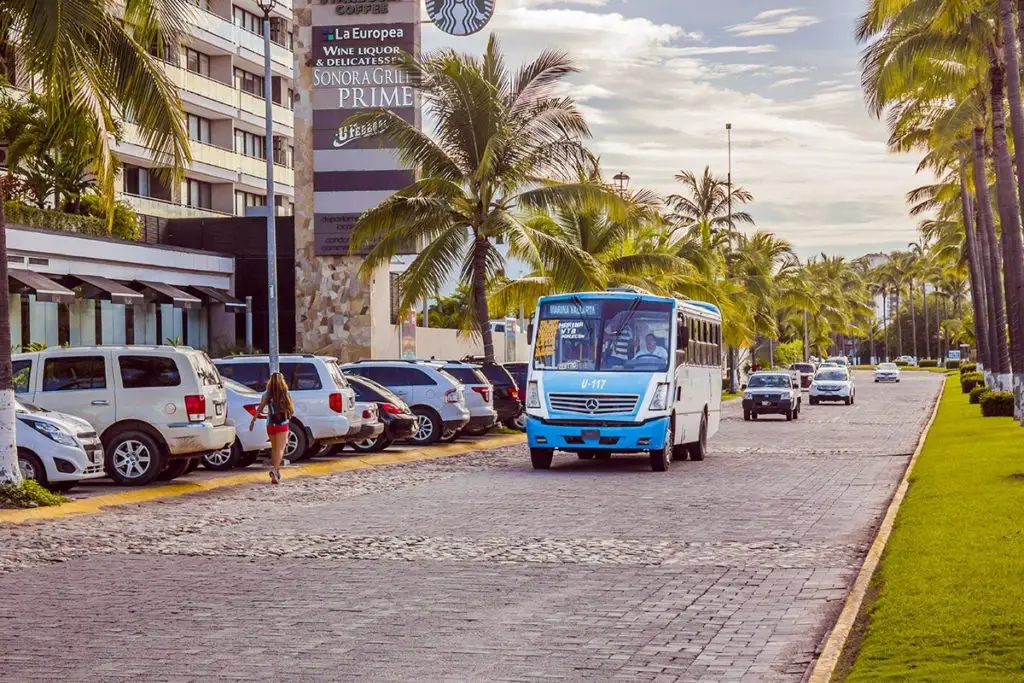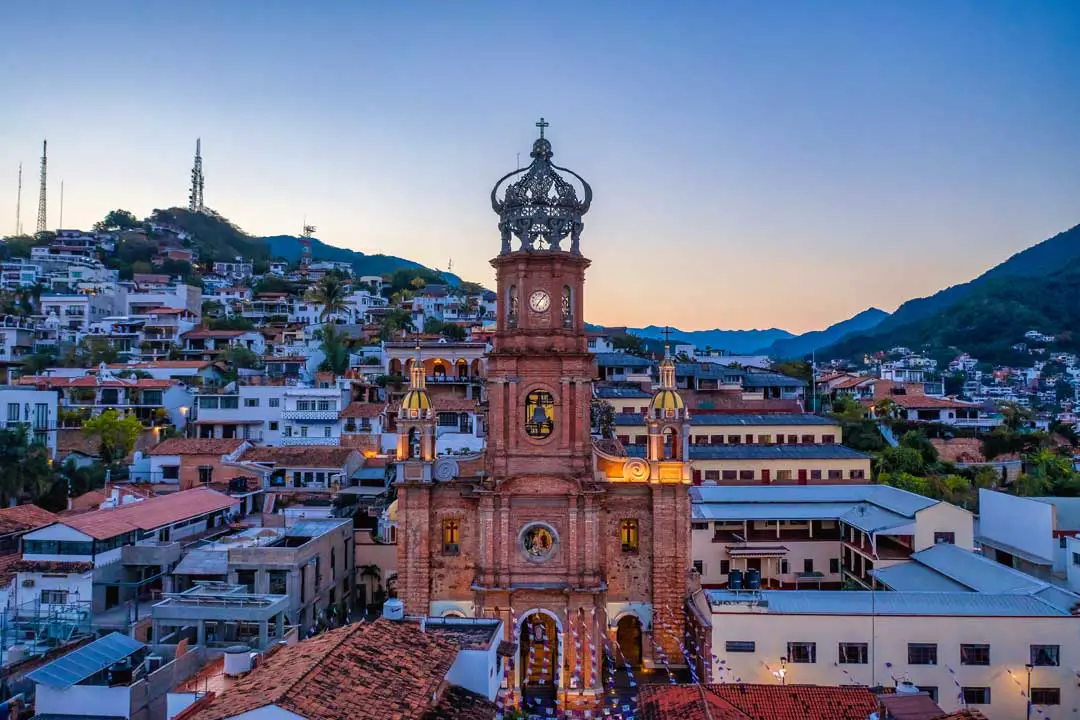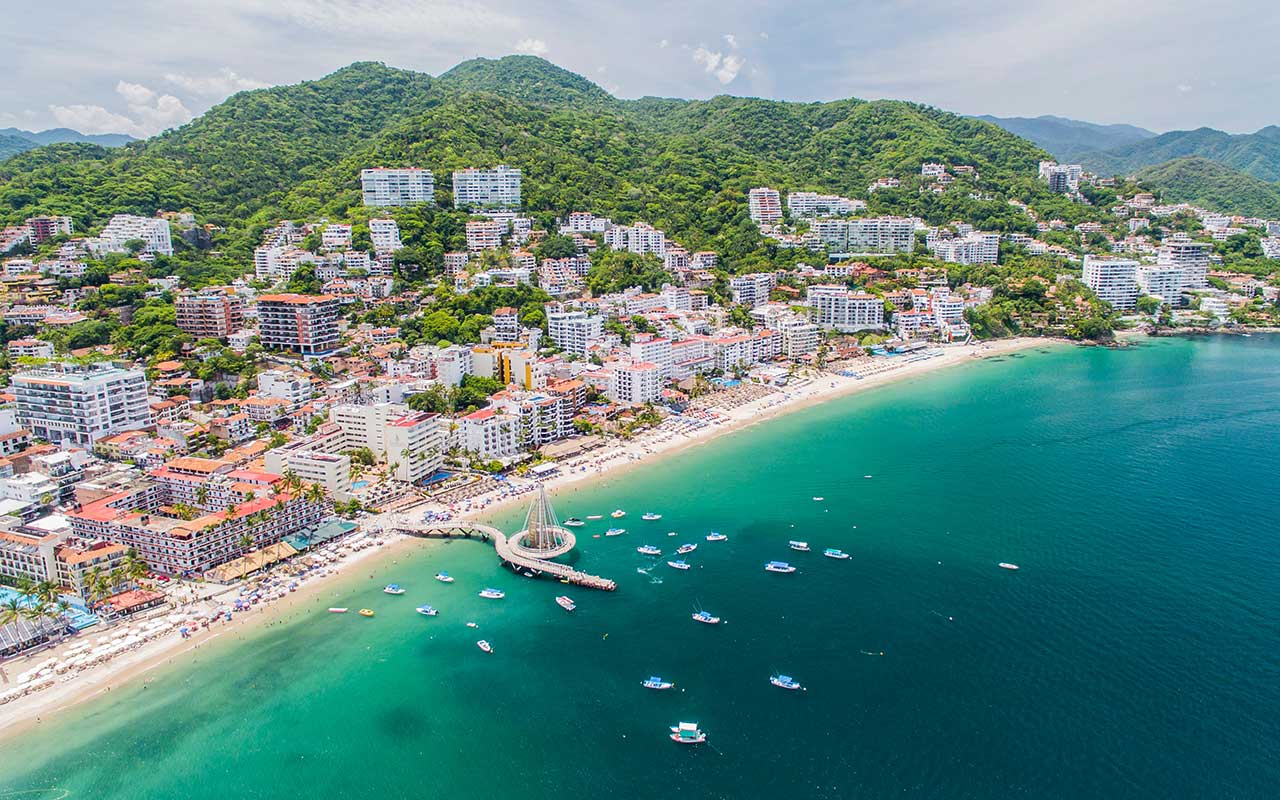Puerto Vallarta Bus Routes
The city of Puerto Vallarta is home to an extensive network of public transportation serviced by hundreds of dedicated drivers. What seems like a simple procession of bus routes is actually a carefully organized system that provides passage for locals and visitors alike between the most frequented areas of the city as well as providing service to residential neighborhoods.
Bus Basics
The bus system in Puerto Vallarta comprises dozens of dedicated drivers who own their buses privately and take pride in providing reliable transportation throughout the city. Major routes along Boulevard Francisco Medina Ascensio, the main thoroughfare that connects the city with points north with its path along the Pacific Coast, tend to run every 5-10 minutes between 6am and 9pm with routes slowly dwindling in frequency and scope thereafter.
As of late 2016, standard fare for a ride on one of the city’s buses is 10 pesos, or less than 50 cents USD. There are no transfers or periodic passes on the city’s buses, and each new ride on a bus will necessitate that the full fare be paid. An exception to this rule concerns children under the age of 4, who are permitted to ride the city’s buses without paying a fare.
Late night service on selected routes is commonly available for a fee of 15 pesos through 1am. A special note concerns the tickets that are given out as a receipt for a paid fare. These tickets must be retained for the duration of the ride, as bus passenger manifests are regularly inspected by route auditors to prevent illegal rides. Failure to conserve your ticket upon boarding a bus can expose a passenger to a fine of up to double each fare.
Centro and Tunnel
The buses visitors will commonly encounter during their stay in Puerto Vallarta will be marked with an array of route indicators, but for transit between the most frequently visited areas of the city, the most important indicator of direction is “Centro” or “Tunnel,” as these routes pass through the city with very different paths before converging again in downtown Puerto Vallarta.
Buses marked Centro will follow Boulevard Francisco Medina Ascensio from at least as far north as the Wal-Mart in the Marina section of the city through downtown Puerto Vallarta before proceeding to respective their route terminus points in the area. This gives them access to attractions and establishments in the Marina, Hotels and Centro areas as well as Old Town.
On the other hand, buses marked Tunnel will turn inland approximately halfway between the Wal-Mart and the northern end of Centro, bypassing downtown Puerto Vallarta entirely before reversing direction in Olas Altas, just inland from the Malecon boardwalk. These buses provide a scenic ride through an area of the city rich with authentic Mexican flavor and is a reliable option for getting from points north in the city to places like Los Muertos Beach while avoiding the traffic that can sometimes develop.
Transfer Zones
As of 2019, routes incoming south to the heart of town have been divided into three turnaround zone at which buses will turn back toward their north and eastbound routes. This program was established in part to relieve traffic congestion coming into the city as well coinciding with the introduction of the new red double-decker tourist buses, making ample space for their passage by turning some two-way thoroughfares into one-way streets.
Buses marked ZT1 will take passengers as far as the stadium and sports complex located along Highway 200 at the southern end of the Hotel Zone.
Buses marked ZT2 will bring riders further into town, turning north in 5 de Deciembre near Parque Hidalgo, allowing access to the beginning of the Malecon.
Buses marked ZT3 will deliver commuters all the way through the most frequently trafficked areas of town, completing the route loop near the Olas Altas section. This transfer zone permits access to all of Centro, the Romantic Zone, and Playa de Los Muertos.
These transfer zones normally affect only Centro routes at this time, but as this zone division scheme is part of a pilot program for planned implementation of similar route planning in municipalities nationwide, more transfer zones may be implemented in the future.
Air Conditioning and Smart Pay
Two of the most recent upgrades to the local bus system promised through the latest fare increase were air conditioning on all buses as well as the introduction of a smart card-based fare system.
Although air conditioning has only been installed on approximately half the city’s fleet of new buses, priority has been placed on installing the units on buses servicing the areas of the city most popular with tourists, such as the Hotel Zone and Marina district.
The smart card program has not yet been fully implemented at this time, but is slated for a steady rollout in the coming months, and cards are already available for sale in limited locations.
Puerto Vallarta’s Major Route Points
Although the two major route lines that service the city follow two defined paths, there are an array of mini-markers within the route designations that make a given but best for access for a given destination.
Aeropuerto
Buses marked “Aeropuerto,” or “airport,” run the longest routes through the city and are a safe bet to transport a visitor practically anywhere within its seaside section. These buses commonly originate in nearby Ixtapa north of the city, following the main boulevard across its length before turning inland onto arterial downtown street Calle Morelo to join the flow of traffic into Centro Vallarta. Obviously, travelers who pack light can also use this bus to return to the airport as well.
Wal-Mart
The local Wal-Mart is one of the most visible installments in the city and is highly familiar to visitors from elsewhere in North America, and so it is also a de facto nexus for bus routes. Both buses heading into downtown Puerto Vallarta out of more residential area as well as routes that take buses down the Francisco Medina Ascensio Boulevard will pass this American institution in the process, and so it is an excellent place to embark upon a regional bus trip to points outside Puerto Vallarta or change routes to reach a specific destination within the city.
Hoteles
Buses marked “Hoteles” are, as the name suggests, scheduled to run past all the major visitor accommodations in the city such as the Sheraton and Fiesta Americana. They can be accessed by visitors heading north from downtown Puerto Vallarta, west from inland residential neighborhoods, or south from the Marina and other points heading toward Aeropuerto and the city’s northern limits.
Pitillal
Buses marked “Pitillal” typically have their routes in more residential areas of the city frequented by locals, but can certainly be of service to visitors as well. Pitillal buses running north will either run along the coastal highway using the Centro route before turning inland at the Wal-Mart or use the Tunel bypass to proceed directly into this haven for locals. Pitillal buses are also useful for accessing the Sam’s Club and Mega superstores in the city as well as accessing residential neighborhoods such as Demonio Blanco and its exhibition arena.
Buenos Aires
Buses such as the R-03 and R-04 have special routes unlike any of the others common to tourists in and around downtown Puerto Vallarta. These buses travel into residential areas such as Buenos Aires and the inland portion of neighborhoods like Zona Romantica, making them a convenient resource for locals and tourists alike.
Route Diversions
In some circumstances such as street parades and other special events, routes may be diverted to prevent interference with the festivities. While this can affect any route on a limited basis with, for example, a street being blocked off for half an hour to permit passage of a parade procession, larger events have a particular effect on routes that pass through the central areas of the city.
During these times, Centro routes will be diverted and turned back toward their origins much earlier in the route, at the northern end of Centro just before the Tienda Ley department store. Passengers seeking entry into more central areas of the city in a route diversion scenario will have to hail a taxi or enjoy a stroll and some sights along the recently renovated Malecon that runs from northern Centro to the stretch of sand bordering Old Town.
Buses to Boca de Tomatlan and Mismaloya
Visitors to the southern end of the city may also see predominantly white buses trimmed in a shade of orange, however, these buses do not run standard routes within the city. Instead, these buses run from outside downtown Puerto Vallarta down highway 200 leading south, transporting passengers to suburban areas including Boca de Tomatlan and Mismaloya.
These travelers’ beaches are preferred by long term visitors as well as residents of the area for their low crowds and crystal clear waters, and taking the bus to its final destination in Mismaloya also allows visitors to access beautiful Yelapa by boat. The fare for a ticket on these buses is set at 8.5 pesos, a figure which remains under .50 USD as of December 2016.
Buses North (to Buscerias, La Cruz, Sayulita and Punta Mita)
Frequent visitors to the city almost inevitability discover the array of fascinating options north of the city, past the recently constructed Nuevo Vallarta development. These locales can be accessed by buses that depart from outside the Wal-Mart in the Marina area, and their destinations along with their major stops along the way will always be clearly marked upon the vehicle. Fares for this longer trip range from 10 to 50 pesos, with the longest rides transporting visitors an hour away to Sayulita and Punta Mita in the neighboring state of Nayarit.
Bus Etiquette
A contributing factor to the smooth operation of Puerto Vallarta’s bus system is the system of etiquette that is established as common knowledge among riders in the area. Astute visitors will note that all passengers boarding a bus will make an effort to have the correct change ready for the driver’s collection to expedite their boarding, and that the two seats directly behind the driver on each side are reserved for passengers with limited mobility. These seats may be marked in yellow for your convenience.
Mexico is also a country that retains very traditional customs, and as such, couples and groups should be aware of the boarding protocol concerning men and women. It is customary for all women in a party to board a bus and be seated immediately while a male in the party pays for both fares. Families who board the bus should follow a similar convention, with all members of the family boarding and the head of the household settling the fares for all riders. This not only respects long held standards of conduct, but also serves to speed up the boarding process.
When boarding as a female/male couple, it’s customary for the female to board first and when the male boards he pays for both fares.
When traveling with a group of family and friends it’s customary for everyone in your group to quickly board, and when the last male from your group boards the bus he pays for everyone in the group. This method shows courtesy to the other passengers and to the driver by speeding up the boarding and payment process.
Another unique characteristic of bus etiquette in Puerto Vallarta concerns the often talented street performers that are permitted to board the city’s buses. These modern day troubadours earn their living riding routes around the city collecting tips from delighted locals and curious visitors. Even the hardworking residents of the city are eager to reward a quality performance, and it is customary to award a particularly outstanding show with up to 100 pesos.
While many tourists prefer to explore the city via taxi or using a private vehicle, the public transportation in the city can offer a compelling look at the culture of the area. The many routes that criss-cross this sunny seaside oasis offer a chance to explore the city like a local, and represent a convenient way to move about the city overall.




2 thoughts on “Puerto Vallarta Bus Routes 2019”
I have noticed this year that there are buses going along Fluvial – Jesus Rodriguez- and turning onto Los Grande Lagos and possibly past the university. This was in December and January . I did not hop on one of these to follow the route but maybe you or someone knows if these buses continue over the pitilal river and connect with the buses that go along Priscillano Sanchez or do they also go along Priscillano Sanchez, if so I think I would like to use this routing to get to Costco/ LaComer area instead of going through Pitilal from the marina area or taking the Tunel bus and then backtracking on Francisco Villa. I will be back in March staying in Marina area this time and going to the Costco area often.
I’m not sure where those buses go – I typically just look for Costco on the front window of the bus, or ask the driver before I pay my fare. The buses have been rerouted throughout the city but affected Old Town mostly.